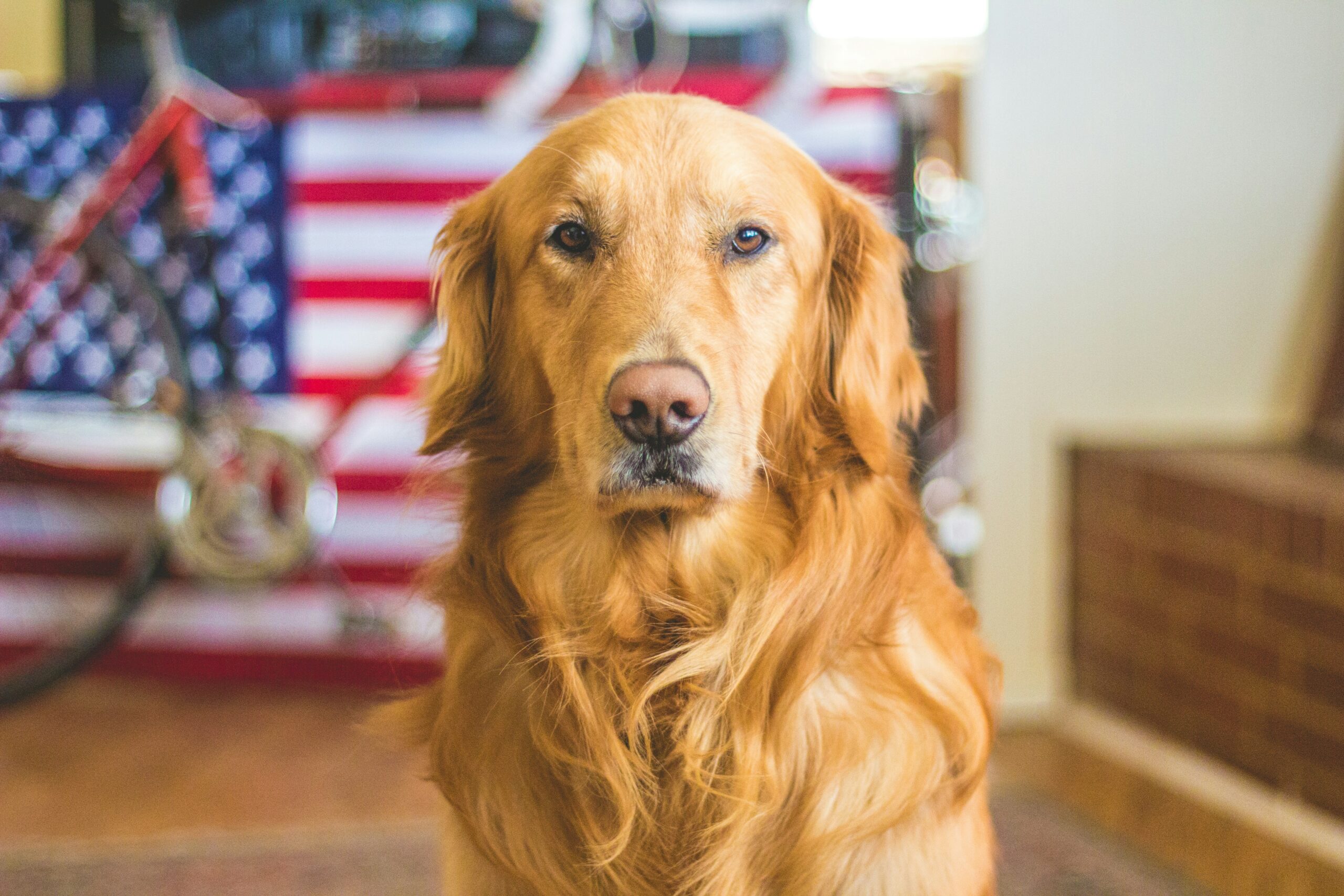DIY Natural Pet Spray Recipe & Guide

We love our pets, and rightly so. They give us those pure moments of joy, they bring us closer to nature (there’s joy there, too!), and they can even heighten our levels of oxytocin – the bonding hormone – in our body, ultimately making us more emotionally healthy and well-balanced. In fact, even our pets experience this hormone secretion as well. Naturally, we want to make them feel as good as possible.
Why Do Dogs Smell?

Dogs bring in all kinds of smells.
Dogs and cats can carry some pretty fierce scents. It could be from rolling around outside, eating something, or even due to some kind of infection. In some cases, you could bathe your dog once a week, and it still wouldn’t solve the issue, since it is embedded in their skin.
Rolling around in smelly things is classic canine behavior, and it calls back to the dog’s ancient and proud ancestry – wolves. The common house dog, Canis Familiaris, has evolved from wolves, same as the house cat, Felis Catus, evolved from the wild Near Eastern desert cat.
Dogs, like wolves, roam in packs. It is hypothesized that rolling around in scents of all kinds was a way for wolves to bring back news to their pack. Nowadays, dogs still exhibit this behavior, and it can cause them to smell pretty darn bad.
Dogs have glands all over their skin – some more than others – and these glands secrete their body’s natural oil. This also occurs in humans, and it is the source of our body odor. This is another reason why your pet may stink. It is simply BO. If we humans wouldn’t bathe on a regular basis, we too would be pretty smelly. It is in our nature.
The third – and also most problematic – reason is the fact that certain types of infections can cause the body’s natural oil to break down, thus releasing a very musky and sometimes downright pungent aroma. If you bathe your dog, but he still smells, it could be a sign of something more than mere scent. It could be a serious issue, and you should have a vet take a look, or rather, take a whiff.
There are other reasons, I am sure, but these are the main three in my experience.
What Is Pet Spray?
If you have ascertained that no threat or infection is involved, and your pet is simply a stinky one by nature, there are ways to combat this. You can clean the house more often, you can bathe your dog more often, and you can also use a pet spray.
There are two types of pet sprays. One has to do with tick and flea control, while the other is more on the ‘aromatherapy’ side of things. The pet spray I will be discussing is the latter. It is an effective way to deodorize dogs and cats and is a staple of proper grooming. It is designed to be as gentle as can be, seeing how your pet’s sensitive skin and fur are different from human skin and hair. Because of the crucial differences between dogs and humans, any product which contains essential oils should be green-lit by your vetrinarian before use. Using essential oils on pets can have toxic and potentially-harmful effects if misused or mishandled.
Many times, odors and dirt are trapped, and it is necessary to break them down and remove them. It could a physical piece of grime that needs treatment, or a lingering odor. Either way, a well-made pet spray will be able to tackle these and make combing your pet’s coat that much easier.
Benefits Of Pet Spray Explained
I mentioned aromatherapy, and while it is true that this is considered to be the sort of treatment meant for humans, pets can also benefit a lot from natural substances. Diluted essential oils and various plant extracts are used to combat unpleasant scents, and they also have the added attribute of nourishing your furry friend’s coat.
A natural pet spray will add a therapeutic quality to the reduction of odor, and contribute to your pet’s behavior and well-being. It is a way to keep pets clean and safe in that time between baths, or on-the-go. Also, since the substances used in natural pet sprays are environmentally-friendly, you don’t have to fear using it in the home.
Natural pet sprays are generally non-toxic and are safe to use around children and other sensitive individuals (like nursing/expecting women, and the elderly). Remember to consult with your doggy doctor, since not all dogs react in the same way even when the oils are heavily diluted.
Benefits Of Natural Ingredients For Dogs

Natural ingredients can have a great impact.
Natural ingredients are well-known for their positive effects on humans, and dogs can also benefit from these plants! In large quantities, certain ingredients can be poisonous, and pet sprays who make use of them must do so in a safe and secure manner, properly diluting any potent substances to avoid causing harm.
Like with humans, these plants can be used to keep pests at bay, but again, a natural spray is not a designated flea and tick solution. It could, however, act as a preventive measure, and when the ingredients are handled properly it may provide relief for pets who have been bitten by those aforementioned insects.
Benefits Of Herbs For Dogs
Lavender is one of the most calming herbs in existence, and there are many others which can benefit humans and dogs alike. If you are looking for a way to calm your pet in a safe way, a pet spray based on natural ingredients could be right up your alley! Many plants are naturally antibiotic and antiseptic, which is a huge upgrade for your preppy pooch. A natural spray is one way to keep your pet refreshed and clean in-between baths, and technically it can be used every day, if necessary. Just beware that dogs and cats are VERY different, and no products meant for dogs should be used for cats as they may be toxic.
DIY Natural Pet Spray Recipe

Lavender contains a calming scent.
There are commercially available natural pet sprays, and they could certainly get the job done. On the other hand, if you are looking for a fun DIY project, you can also make your very own pet spray, using natural herb and plant extracts along with some water and an ordinary spray bottle. Be sure to consult with your vet before beginning any treatment or use of products containing naturally-derived ingredients.
For Calming Spray
In a spray bottle, mix about 250ml of water, along with 5-7 drops of plant extract. Shake well, turn the bottle to ‘mist mode’, and apply lightly to your pet’s coat while making sure to keep it from coming into contact with their face or any orifices. It’s that easy! Remember that many extracts are highly potent, and you should always err on the side of caution.
Before And After Dog Results

Nothing Like a Clean Pup.
I never had a use for the insect-repelling kind of sprays, since my doggy never gets any kinds of skin conditions. She has very short fur, and I also have a regular treatment that I am used to. However, I did have a go at a lavender spray, and the results have been great.
My doggy may be free of skin conditions – thankfully – but she does love to roll around in, well, anything that takes her fancy. I found that spraying her with natural pet spray is an optimal solution since I am not such a fan of baths. I bathe her only several times a year, and the spray is a great intermediate solution for bad odors.
This is especially true in the rainy season when things are all wet, dirty, and smelly all around us. When she walks back into the house with the scents of the neighborhood surrounding her like a cartoonish mist, I take out the spray bottle and give her a few short blasts. She is a small breed, so it’s good enough.
Conclusion
We love our pets, we want to keep them happy, but we also want to keep them clean and healthy, since they live with us. They climb on our furniture, snuggle with us, and play with us. Using harmful chemicals and harsh detergents is never a good answer, especially in a home where there are others who may be sensitive to those substances.
This is where a natural pet spray can really shine, and where you can feel that you are providing the best for your pet, without putting anyone at risk, and without spending a ton of money, either. Whether you decide to go with a commercial natural pet spray or a homemade one, it is a wonderful solution for everyone involved! Just make sure you’re using proper dilution rates to avoid potential toxicity!


